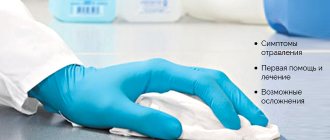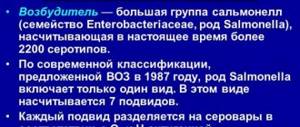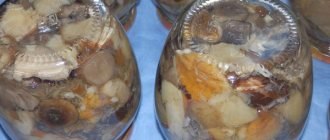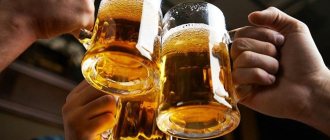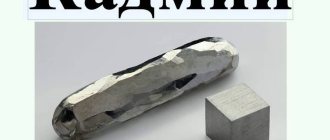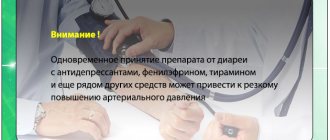Serving such a noble drink as sparkling champagne has firmly established itself in the world as a sign of the right tone at business buffets, fashion shows, parties and other social or festive events. However, few people think about it, but among all the positive aspects associated with champagne, it can also cause real poisoning. Cases of intoxication with this sparkling wine occur especially often during the New Year, International Women's Day and Valentine's Day celebrations.
It would seem how you can get poisoned by this drink, because it contains a very small percentage of alcohol, so even underage teenagers can drink it. However, the answer to the question “Is it possible to get poisoned by champagne?”, to someone’s surprise, will be positive. There can be three reasons for intoxication:
- drinking too much drink;
- mixing champagne with other, stronger alcohol;
- low quality or spoilage of the product.
Symptoms of alcohol poisoning
Symptoms of champagne poisoning can vary. But most often it is:
- Nausea can be severe and even cause vomiting (see Vomiting in case of poisoning). Vomiting allows you to remove foods that poison the body. Vomiting due to champagne poisoning is repeated and may not stop for a long time. Nausea may occur after the drink is absorbed from the stomach into the blood.
- Dizziness (see Dizziness in case of poisoning) and general weakness appear independently or after vomiting. Dizziness can be so severe that it impairs coordination and causes falls.
- Loose stools also indicate poisoning. Diarrhea can be very frequent, which over time can lead to dehydration.
- Pain in the epigastrium, as well as throughout the abdomen (see. Pain in the stomach due to poisoning). These are signs of gastritis and enterocolitis. The pain can be intense, spasmodic in nature and cannot be relieved with painkillers.
- Intense gas formation with severe spasmodic pain may occur.
- An increased heart rate and increased pulse rate indicate severe poisoning. The body tries to quickly remove toxic substances, which leads to shortness of breath and tachycardia (increased heart rate).
- Increased sweating. Cold, sticky sweat appears on the body and palms. There may be a feeling of fear of death.
- Pale facial skin and blue lips are observed in severe cases of poisoning. Serves as a symptom that a circulatory disorder has occurred as a result of poisoning.
If such symptoms appear, you must immediately call an ambulance to prevent serious complications.
Find out which medications are recommended to take at home to relieve alcohol intoxication. How to relieve the effects of poisoning.
To whom are droppers indicated for alcohol intoxication? The effect of solutions for intravenous infusions on the body.
Preventive precautions
- If you are going to an event where drinking champagne is almost mandatory, before leaving you should lightly fill your stomach with fatty foods, which, due to slow digestion, prevent alcohol from being absorbed into the walls of the stomach;
- A glass of milk has the same effect;
- To prevent dehydration, there should be a glass of still water per glass of alcohol;
- It is necessary to stay warm, as a person loses it when drinking large amounts of alcohol;
- After drinking too much, when going to bed, you should drink the maximum amount of water;
- For a headache, we should take paracetamol the next morning for a hangover. In this case, it is not recommended to drink aspirin, it has an adverse effect on the stomach;
- A cup of coffee helps a lot.
What to do in case of alcohol poisoning at home?
Poisoning from expired champagne
Is it possible to get poisoned by expired champagne? Champagne is a sparkling wine and requires certain storage rules. First of all, it should be recalled that the storage temperature should be +10...+12 degrees. Temperatures below +5 degrees negatively affect the taste of the product. It can also deform the cork, which will have a bad effect when trying to open it.
Another important condition is storage in a dark place. Under no circumstances should the bottle of champagne be exposed to direct sunlight. If this is not possible at home, it is recommended to wrap the bottle with black cloth.
Sparkling wines are stored horizontally rather than vertically. Thus, it turns out that violation of storage rules significantly reduces the shelf life of this drink. The store cannot create special storage conditions, and they do not adhere to them, so the expiration date is significantly reduced from the date indicated on the bottle.
Important! Expired champagne can cause food poisoning, with all the ensuing negative consequences and complications for the body, so you shouldn’t risk your health.
Methods on how to avoid poisoning from champagne
How to avoid poisoning from a sparkling drink? There are a number of rules that should be taken into account when purchasing and drinking champagne.
Rules:
- When choosing a drink, it is recommended to pay attention to the expiration date and the manufacturer of the product. It is better to purchase champagne from trusted retail outlets.
- It is not recommended to drink wine on an empty stomach. (wine poisoning)
- It is allowed to drink coffee to reduce the adverse effects of champagne on the body.
- You cannot drink champagne uncontrollably; you must follow a certain dosage and not exceed it.
- Parents should monitor their children and prevent them from using this substance.
Following simple rules will help avoid poisoning.
First aid to the victim
Stages of first aid if a person is poisoned by champagne:
- Stomach cleansing.
- Rehydration stage.
- Reception of adsorbents.
- Symptomatic treatment.
What to do if you are poisoned by champagne - first of all, empty your stomach of toxic substances by vomiting. To do this, you can drink a large amount of warm boiled water and press on the root of the tongue. Such help will empty the stomach and prevent the toxic substance from being absorbed into the blood.
Note! You can only induce vomiting if the person is conscious.
Next, it is necessary to speed up the work of the kidneys in order to cleanse the blood of ethyl alcohol, which is contained in champagne. To do this, you need to drink 1-1.5 liters of liquid. Warm sweet tea, a decoction of chamomile, rosehip, uzvar or compote will do. It is necessary to take liquid in small sips, but often. Drinking quickly may trigger vomiting again.
This stage is also called rehydration - fluid intake should replenish the deficiency of electrolytes that were lost during vomiting.
Taking adsorbents will help cleanse the blood of absorbed harmful substances. Smecta, White activated carbon, Phosphalugel, Enterosgel, Polysorb can be used as adsorbents. It is better not to mix the use of these drugs with the use of other drugs, since they are able to absorb not only bad substances on their surface, but also the medicinal properties of the tablets and remove them through the intestines. Thus, the effectiveness of taking the medication is sharply reduced.
Note! Adsorbents and medications should be taken at intervals of 1-2 hours so as not to reduce their effectiveness.
If necessary, it is recommended to conduct a series of cleansing enemas. To do this, you can use a decoction of herbs, clean boiled water or lightly salted water at room temperature. Enemas are carried out in several series until clear wash water is obtained.
Video: be careful champagne
Read further:
How to prepare chicken broth in case of poisoning for children and adults
Harm from drinking wine
How to quickly recover from food poisoning - real tips and tricks
Salmonellosis in quail and chicken eggs - how to recognize
Maiden grapes are poisonous or not for adults and children - application
Article rating:
Share with friends:
You may also be interested in:
Poisoning with alcohol surrogates - ICD 10, symptoms and first aid for poisoning
What to do in case of cognac poisoning - symptoms and first aid
Effective withdrawal from binge drinking using occupational therapy
Methyl alcohol (methanol) poisoning: symptoms, first aid, consequences
If a person is unconscious
Providing first emergency aid, before the arrival of emergency medical services, can only be performed on patients who are conscious. If sleep or coma occurs, then providing assistance becomes difficult.
If the patient is unconscious, the following steps must be taken:
- call an emergency medical team as quickly as possible;
- shift the patient onto his side and under no circumstances leave him lying on his back;
- fix the tongue to prevent it from retracting;
- do not give any pills or fill them with water;
- monitor changes in respiration, blood pressure (BP) and pulse.
Read about the signs of wine poisoning and how to help the victim.
Do you know how methyl alcohol poisoning manifests itself? What to do if a person is poisoned by surrogate alcohol?
Learn about the symptoms and severity of ethanol poisoning. How to help a victim of alcohol intoxication.
How to prevent champagne poisoning
First of all, you need to carefully choose a drink, better than a well-known brand. Champagne must have a certificate and a quality mark. This can protect you from buying counterfeits. Alcoholic drinks must be purchased in specialized stores. Before drinking alcohol, you should eat easily digestible food. Broth, light vegetable soup or porridge are suitable for this. It is better not to eat fatty meats, mushrooms or legumes.
Champagne is easily absorbed from the stomach and quickly leads to intoxication, so the amount you drink must be carefully controlled. We remember that champagne gets drunk much faster than any other wine. At the end of the evening, it is recommended to drink a cup or two of weak tea or milk. This will speed up kidney function and the elimination of alcohol from the body. And the main rule: under no circumstances should you mix different types of alcoholic beverages. This rule applies to champagne more than to other types of alcohol.
Serving such a noble drink as sparkling champagne has firmly established itself in the world as a sign of the right tone at business buffets, fashion shows, parties and other social or festive events. However, few people think about it, but among all the positive aspects associated with champagne, it can also cause real poisoning. Cases of intoxication with this sparkling wine occur especially often during the New Year, International Women's Day and Valentine's Day celebrations.
It would seem how you can get poisoned by this drink, because it contains a very small percentage of alcohol, so even underage teenagers can drink it. However, the answer to the question “Is it possible to get poisoned by champagne?”, to someone’s surprise, will be positive. There can be three reasons for intoxication:
- drinking too much drink;
- mixing champagne with other, stronger alcohol;
- low quality or spoilage of the product.
Signs of poisoning
The consequences of champagne intoxication can be the manifestation of a variety of symptoms, the main of which are:
- Weakness throughout the body and dizziness, which can be so severe that it impairs coordination and can cause falls;
- Pallor of the skin of the face, palms, nails, as well as blue discoloration of the lips and mucous membranes is a sign that the poisoning is quite severe, resulting in a disruption of normal blood circulation;
- Nausea, sometimes with pronounced repeated and continuous vomiting, which, however, on the contrary, is an attempt by the body to cleanse itself of toxic toxins that are absorbed into the walls of the stomach, then entering the blood;
- The appearance of copious loose stools;
- Abdominal bloating may occur, i.e. intense gas formation, accompanied by acute cramps in the abdomen;
- A sharp increase in pulse and heart rate is also a sure sign of severe alcohol poisoning. The body tries to eliminate toxic substances as quickly as possible, which is actually the cause of tachycardia;
- Epigastric cramps in the upper abdomen (the so-called “triangle under the ribs”), such pain can be so acute that even the most powerful analgesics may not cope with it;
- Increased sweating, and the sweat that appears on the body and palms is a very cold and viscous liquid, and a person may experience a strong feeling of anxiety and fear for his life.
If these symptoms occur, it is recommended to immediately call an ambulance.
Storage rules and intoxication with expired product
We can say that champagne is the same wine, only with the addition of gas, so it also needs to follow some storage rules. This is very important, because expired champagne can cause acute food poisoning, which can result in complications and with all the ensuing consequences of a detrimental nature.
Consequences and prevention
Champagne intoxication can lead to adverse consequences and disruptions in the functioning of the entire body.
- Exacerbation of various diseases,
- Disruption of the cardiovascular system,
- Malfunctions of the nervous system,
- Development of kidney and liver diseases,
- Severe poisoning can cause death.
Preventative measures are simple. You need to monitor the dosage, do not drink on an empty stomach. Champagne should not be mixed with other alcoholic drinks. Children are not allowed to pour champagne.
Champagne poisoning is possible, despite the fact that the drink is considered safe. If signs of intoxication appear, it is necessary to provide the victim with first aid and go to a medical facility.
First aid
If it turns out that a person has been poisoned by champagne, you need to help him without wasting a minute. What to do for this:
- To rinse the stomach from the remnants of toxic toxins that have not yet managed to penetrate into the blood - to do this, you need to artificially induce vomiting (this cannot be done if the poisoned person is unconscious). First, you need to give the poisoned person plenty of liquid to drink (warm water, herbal infusion, unsweetened tea or compote), and then apply the “two fingers in the mouth” rule, i.e. lightly press on the very base of the tongue, thereby causing vomiting. It is recommended to carry out a similar procedure several times until the vomit becomes completely light, almost transparent.
- Rehydration – Vomiting, diarrhea and sweating cause the body to become severely dehydrated. Therefore, to maintain the water-salt balance, it is necessary to take any of the special rehydration drugs (Regidron, Oralit, etc.), which compensate for the loss of fluid in the body along with electrolytes (acids, mineral salts, glucose, etc.), which play a very important role role in human life. If you don’t have such drugs on hand, you can simply drink as much boiled or bottled water as possible with the addition of a pinch of salt, sugar and soda;
- Taking sorbents are special preparations that are designed to remove toxins, excess gases and harmful microorganisms from the body. The most common of them include white coal (black can also be used), Enterosgel, Laktofiltrum, Smecta, etc. It is worth noting that while taking adsorbents, it is better to temporarily refrain from using other drugs;
- Symptomatic therapy - means of complex action for the symptomatic treatment of alcohol poisoning include drugs such as Zorex, Glycine and Alka-Seltzer, which is actively advertised on TV.
Important! If the poisoned person is unconscious, it is necessary to urgently call an ambulance. While she is driving, you should lay the patient on his side, not allowing him to fall on his back, and also constantly monitor the person’s breathing and pulse, if they suddenly stop, you should immediately begin giving him artificial respiration or cardiac massage, respectively.
How to avoid intoxication
The most important thing I would like to advise is: buy only proven brands of champagne, with a certificate and a quality mark - no need to buy cheap unknown options. To avoid counterfeits, it is recommended to purchase alcohol-containing drinks only in specialized or large chain stores.
Before drinking alcohol, you should have a good snack of some easily digestible food: you don’t need to eat anything very fatty, because in combination with large amounts of alcohol, you can get inflammation of the pancreas - pancreatitis. Light salads, vegetables or broth are perfect for a snack.
The amount of champagne you drink must be carefully monitored, because... Sparkling wine is instantly absorbed into the walls of the stomach, penetrating into the blood and leading to rapid intoxication. After finishing the feast, it is recommended to drink a couple of cups of tea, even better - with milk. This will stimulate better functioning of the kidneys, which can quickly remove alcohol from the blood.
Champagne is a popular and traditional holiday drink in many countries, but its excessive consumption has very serious consequences. Is it possible to be poisoned by alcohol-containing carbonated drinks, including champagne, is a common question asked by sparkling wine consumers.
The victim is conscious
The following steps must be taken:
- Clear the stomach of toxic substances by inducing vomiting. It is necessary to give the patient a large amount of clean, warm water to drink. This method helps flush the stomach, preventing toxins from entering the circulatory system.
- Improve kidney function, as a result of which the blood will be cleansed of the alcohol contained in champagne. To do this, you should drink any liquid (1–1.5 l.). Dried fruit compote, black or herbal tea. In order not to provoke a new attack of vomiting, you need to drink often, but in small sips.
- Replenish fluid loss and restore the amount of electrolytes lost during vomiting. Drink a poisoned person with special saline solutions.
- Take adsorbents to cleanse the blood of toxic substances. You can use drugs such as Activated carbon, Smecta, Atoxil. It is undesirable to combine the use of adsorbents with other agents, since they will absorb not only toxins, but also remove taken medications from the body, as a result of which their effectiveness will decrease.
- If necessary, do a cleansing enema with clean warm water or any decoction of medicinal herbs.
Composition and types of champagne
Most often, champagne poisoning occurs as a result of drinking a low-quality or adulterated drink, so it is very important to know the composition of a good wine and at least have a little understanding of the types of such alcohol. The type of champagne is determined by its color and age, the amount of sugar and the volume of grape juice included in the drink, which can be presented:
- red, white and pink champagne;
- one-year species Vintage;
- unseasoned Non-Vintage look;
- sweet, semi-sweet, dry, extra-dry and semi-dry, as well as brut.
Negative influence
Male and female bodies perceive alcoholic drinks, including sparkling wine, very differently. That is why, under conditions of a similar body weight and with the same amount of alcohol consumed, the following differences are noted:
- in a woman’s body, liver enzymes break down a smaller amount of alcohol;
- with hormonal changes occurring in the female body, the perception of alcohol changes;
- Women are most susceptible to the rapid development of alcohol dependence.
It should be noted that women who abuse any alcohol-containing drinks are more likely to suffer from liver pathology, pancreatic diseases and hypertension.
In addition, the number of deaths from liver cirrhosis is predominant among the fairer sex.
Symptoms of poisoning
Champagne poisoning is not a very common phenomenon compared to severe intoxication resulting from the consumption of other strong alcoholic products. Some people often replace the concept of signs of intoxication with a state of intoxication, and feeling unwell is often confused with the feeling of a banal hangover. However, it is in such situations that, as a rule, there is an uncontrolled occurrence of irreversible pathological changes that can cause death.
The most common signs of poisoning are:
- repeated vomiting;
- severe diarrhea;
- severe paroxysmal nausea;
- dizziness and headaches;
- clouding of mind;
- disturbances in coordination of movements;
- spatial disorientations;
- disruptions in the functioning of the respiratory center, including shortness of breath and suffocation;
- acute, paroxysmal pain in the abdominal area;
- increased heart rate;
- increased sweating;
- pronounced pallor of the skin.
The symptoms accompanying severe and moderate intoxication, which manifests itself:
- a sharp decrease or increase in body temperature;
- muscle spasms and convulsions;
- feverish condition;
- slurred speech;
- blueness of the skin;
- fainting or precomatose state;
- profuse and repeated vomiting, causing dehydration.
You can get quite poisoned from champagne even if you consume a minimal amount of counterfeit drink, so at the very first signs of poisoning it is necessary to provide the victim with competent pre-medical assistance.
Causes and symptoms
Champagne is a red or white wine resulting from fermentation with the presence of carbon dioxide.
As a rule, the drink is light in color due to the fact that grape skins with coloring pigments are not used in production. Champagne was first produced in the French province of Champagne, which is where it got its name. However, nowadays this word is used to describe almost any sparkling wine. In Russia, similar drinks are produced at different factories. The most popular are “Russian” and “Soviet” champagne, however, a product called “Santo Stefano” has also gained some popularity among consumers.
Champagne is considered the safest alcoholic drink. Many people are sure that it is impossible to get poisoned. However, there are several reasons and factors that can provoke champagne intoxication.
Factors:
- Consuming a low-quality product. Often, to save money, manufacturers use unrefined alcohol in the manufacture of the product; they add denatured alcohol and chemical additives.
- Sugar, carbon dioxide, and alcohol together lead to the slow destruction of the body and malfunction of systems and organs.
- It is recommended to remember that champagne has a certain expiration date. Only a real drink made according to all the rules can be stored for a long time.
- Improper storage conditions can also cause poisoning. Champagne bottles should not be left in direct sunlight, as this can lead to the release of harmful substances.
- An open bottle should not be stored for more than twelve hours. During this period, due to fermentation, harmful bacteria multiply.
- In children, poisoning is possible if the drink is consumed in large quantities.
Thus, an overdose is possible for any person who drinks champagne uncontrollably. How does an overdose of sparkling wine manifest in adults? What symptoms are typical for such poisoning?
Signs:
- Spinning in my head
- Nausea, urge to vomit,
- Loss of coordination, speech problems,
- Painful sensations in the stomach, head,
- Increased heart rate
- Increased secretion of sweat and saliva,
- Paleness of the skin, in severe cases acquires a bluish tint,
- Disorientation in space
- Feverish state, increased body temperature,
- Intestinal upset, loose stools,
- Increased nervousness and irritability,
- Respiratory system dysfunction.
A severe form of poisoning can cause convulsive manifestations and a coma.
In the absence of correct and timely first aid, death is possible.
Pre-medical first aid measures
Knowing what to do in case of sparkling wine poisoning, you can avoid the risk of developing serious complications, and in some cases, you can save a person’s life.
A set of first-aid measures for alcohol intoxication:
- lay the victim on his side and bend his leg at the knee, which will prevent the patient from choking on saliva or vomit;
- in order to prevent asphyxia, fix the position of the tongue;
- perform gastric lavage with a weak pink solution based on potassium permanganate;
- stabilize the water-salt balance with clean water, weak black tea, rosehip infusion or milk.
- cleanse the intestinal tract with an enema.
Gastric lavage and the use of an enema are not recommended for elderly patients and very young children . After cleaning the gastrointestinal tract, absorbents are given in the form of “Smecta”, “Enterosgel”, “Activated Carbon”, “Polyphepan”, “Polysorb” or “Carbolong”. Absorbent preparations based on pectin, chitin, fiber and cellulose, as well as bran have proven themselves well.
Prevention measures
To avoid sparkling wine poisoning, it is advisable to follow a few simple recommendations:
- Do not drink alcoholic beverages, including champagne, on an “empty” stomach;
- before the feast, it is advisable to consume fatty food that takes a long time to digest and delays the penetration of alcohol into the blood;
- it is important to control the dose of alcohol you drink and not exceed the recommended amount of alcohol-containing drinks;
- Only certified and high-quality champagne from well-established, well-known manufacturers should be consumed;
- In order to prevent dehydration, it is necessary to drink enough water during the feast.
Alcohols, contained in large quantities even in high-quality champagne, provoke a sharp constriction of blood vessels, so a cup of strong black coffee helps prevent the appearance of paroxysmal headaches. Before going to bed, it is advisable to drink about a glass of warm milk. It is important to remember that excessive consumption of champagne disrupts a person’s psychological behavior and moral character. Under the excessive influence of alcoholic beverages, people's minds become clouded and their actions become uncontrollable. Such a person can cause harm not only to himself, but also to those around him.
source

